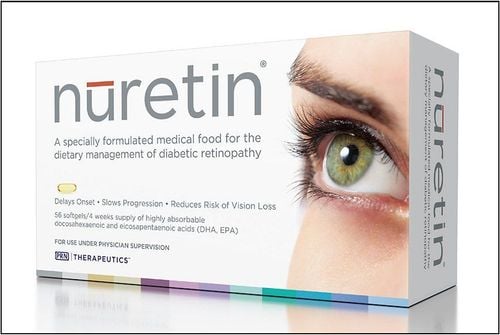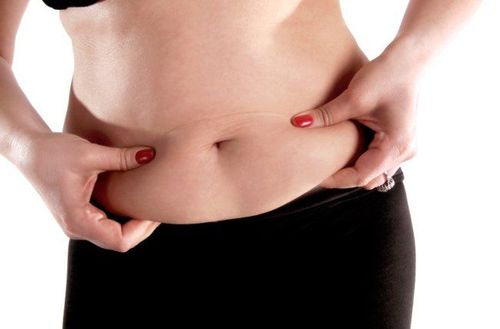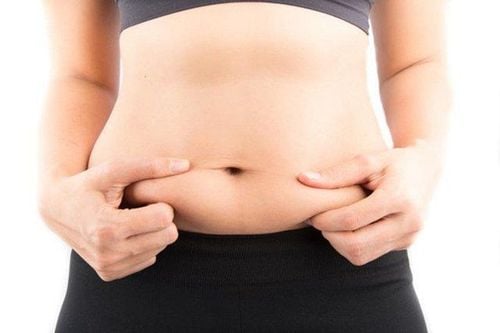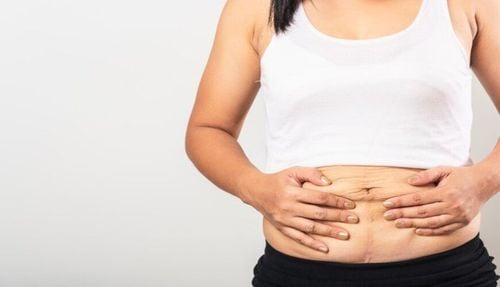This is an automatically translated article.
Abdominal liposuction is a method performed when diet and exercise are not effective in reducing fat or losing weight. However, liposuction has many potential risks and dangers. So should I go for liposuction or not?
1. What is liposuction?
Liposuction is a cosmetic surgery method used to remove excess fat. This procedure is performed when methods such as dietary modification and exercise fail to remove fat from certain areas of the body. Areas that can be liposuction include: abdomen, arms, buttocks, calves and ankles, hips, thighs, neck, chest and back. In addition, liposuction can also be performed to reduce breast size.
MORE: Can body fat help you lose weight?
2. Liposuction procedure
2.1 Before surgery The patient talks to the doctor about how he wants to lose fat, how his body shape after recovery,...; The patient talks to the doctor about his/her medical history, medical condition, medications or supplements he/she is taking; Your doctor may tell you to stop taking certain medications, such as blood thinners or NSAIDs, at least 2 weeks before surgery. 2.2 Performing the surgery First, the doctor marks circles and lines on the treatment area of the body. After that, liposuction is performed depending on the technique chosen. Specifically:
Tumescent liposuction technique: This is the most widely used liposuction technique. During the procedure, the doctor injects a sterile solution into the treated area to remove fat, avoid pain, and constrict blood vessels. This mixture causes the intervention area to swell and harden. The doctor then makes a small incision in the skin and inserts a catheter. The catheter connects to a vacuum to drain fat and fluid out of the body. The removed fluid is replenished through an intravenous infusion;
Ultrasonic Liposuction (UAL): This method can be done with Tumescent liposuction technique. During the procedure, the doctor inserts a metal rod to deliver ultrasound energy under the skin. The ultrasonic energy can break the fat cell wall and liquefy the fat cells, making it easier to remove the fat;
Laser Liposuction (LAL): This is a technique that uses high-intensity laser light to liquefy fat, making it easier to remove fat. The fat is then removed from the body through the catheter;
Force liposuction: With this technique, the doctor will move a catheter back and forth at high speed. The vibration makes it easier for the doctor to dispense the solid fat. This method can cause less pain and swelling, removes fat with high precision, especially in small areas such as arms, knees, ankles.
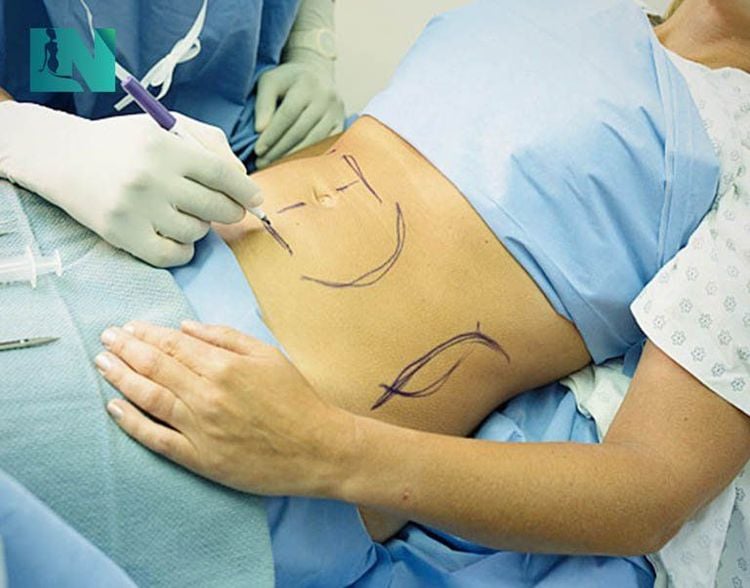
Có nhiều phương pháp hút mỡ bụng phù hợp với từng tình trạng của người bệnh
2.3 Recovery After surgery, the patient may or may not need a hospital stay (depending on the liposuction method chosen). Patients may experience bruising, swelling, or soreness for several weeks. You may be asked to wear a compression bandage for 1 to 2 months after surgery to reduce swelling. Your doctor may also prescribe some antibiotics to prevent infection.
Patients after liposuction can return to work after a few days of intervention. Within 2 weeks after the intervention, the patient can perform daily activities.
2.4 Results Most of the patients after liposuction on abdomen, thighs, hips, biceps,... are satisfied with the results of surgery. Changes in the body will be noticeable within the first few weeks, especially after 4-6 weeks.
Although fat cells are permanently removed after liposuction, the patient can still gain weight again. Besides, the number of remaining fat cells in the body does not increase, but the remaining cells can enlarge to make up for the empty space after liposuction. In addition, fat may decrease with age. Along with the thinning of fat, the skin becomes more and more flabby, redundant and saggy. Therefore, it is necessary to stay in shape by maintaining a healthy diet and exercising regularly.
MORE: Effective belly fat loss diet
3. Should you go for abdominal liposuction?
Abdominal liposuction is usually indicated for people with a large belly or postpartum women with a lot of excess fat. With cases accompanied by excess skin, after liposuction, it is necessary to have plastic surgery to remove the normal skin. This is a major surgery, so before surgery, the patient needs to have their overall health checked, especially liver, kidney, heart, lung function and blood tests.
The amount of fat sucked out is not arbitrary according to the needs of the patient but must ensure a maximum of no more than 4% of body weight. If more fat is absorbed, the body will lose a lot of fluid, causing shock, anaphylactic shock.
Liposuction helps to reduce fat locally and has an aesthetic effect. However, in terms of health, liposuction can cause many consequences. In fact, even though the fat is sucked out, it still remains in the blood vessels, around the heart and kidneys, etc. Besides, the weight that the body loses after liposuction is not completely fat but also contains water and fluid. .
Choosing should - should not have abdominal liposuction should be based on the following criteria:
People over 40 years old, no longer having children can have abdominal liposuction; People with diabetes, cardiovascular disease, blood clotting disorders or smoking,... absolutely must not have surgery; Be careful when performing liposuction, fat separation and abdominal wall formation, because this is a major surgery, potentially dangerous to life, leaving scars; Before liposuction, it is necessary to test the abdominal genes, if not allergic, surgery can be performed. If the abdominal gene is not adapted, it should not be performed because the waist cannot be shaped after liposuction.

Người bệnh cần trao đổi với bác sĩ về tình trạng sức khỏe trước khi quyết định hút mỡ bụng
4. Is liposuction safe?
Liposuction is as dangerous as other major surgeries. Specifically:
Taking out too much excess fat in the body suddenly can cause many disorders, bleeding; If the fat suction tube touches the blood vessels, it can cause extensive edema in the patient; Risk of hematoma complications, decreased or increased pigmentation of the skin, uneven skin, keloid scars, skin necrosis due to improper suction of the fat layer, damage to blood vessels, inflammation of subcutaneous adipose tissue, puncture of the abdominal wall causing peritonitis, bacterial infection, necrotizing para-abdominal inflammation, bleeding, embolism. The risk of complications above occurs in cases of too much fat or liposuction at many different sites at the same time, performing many different surgeries at the same time, giving too much fluid - anesthetic or surgical time. lengthen. Therefore, the safety of the abdominal liposuction procedure also depends a lot on the skill of the doctor.
Liposuction is a procedure to help reduce fat but can cause many complications for the body. After liposuction, to maintain a slim figure, patients need to maintain a reasonable diet and exercise regularly.
Please dial HOTLINE for more information or register for an appointment HERE. Download MyVinmec app to make appointments faster and to manage your bookings easily.




